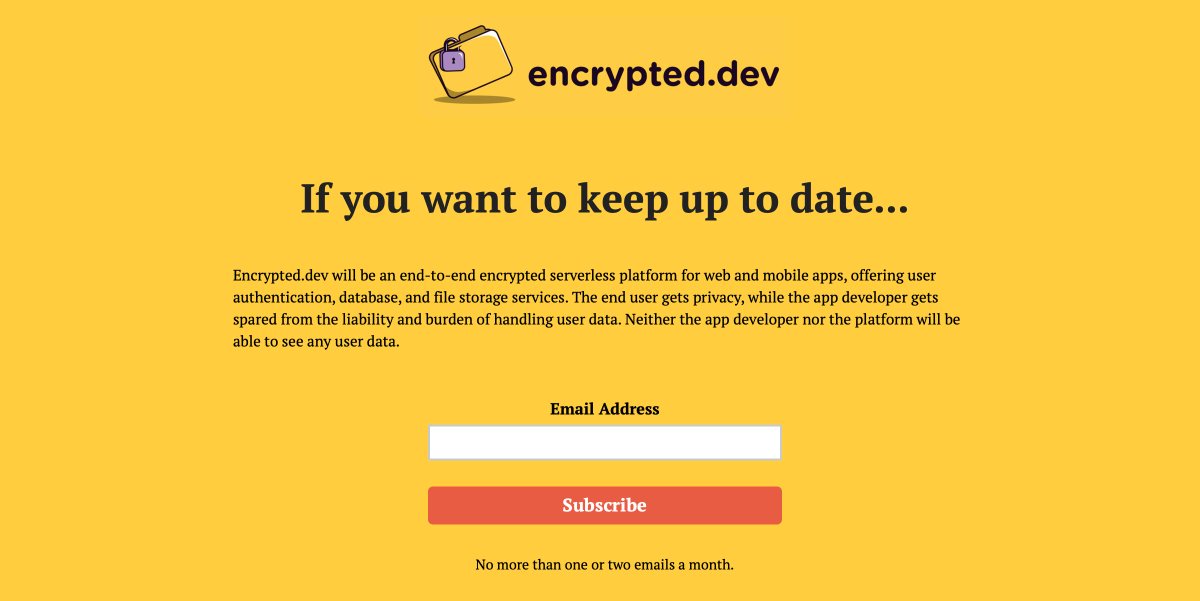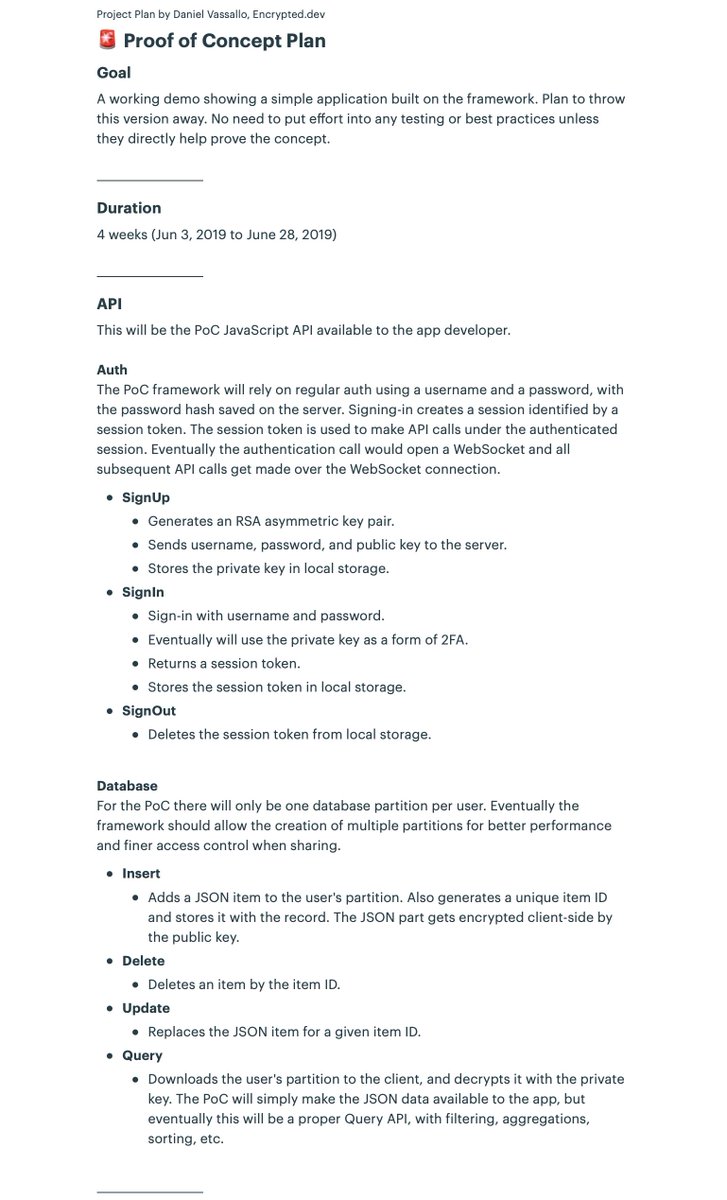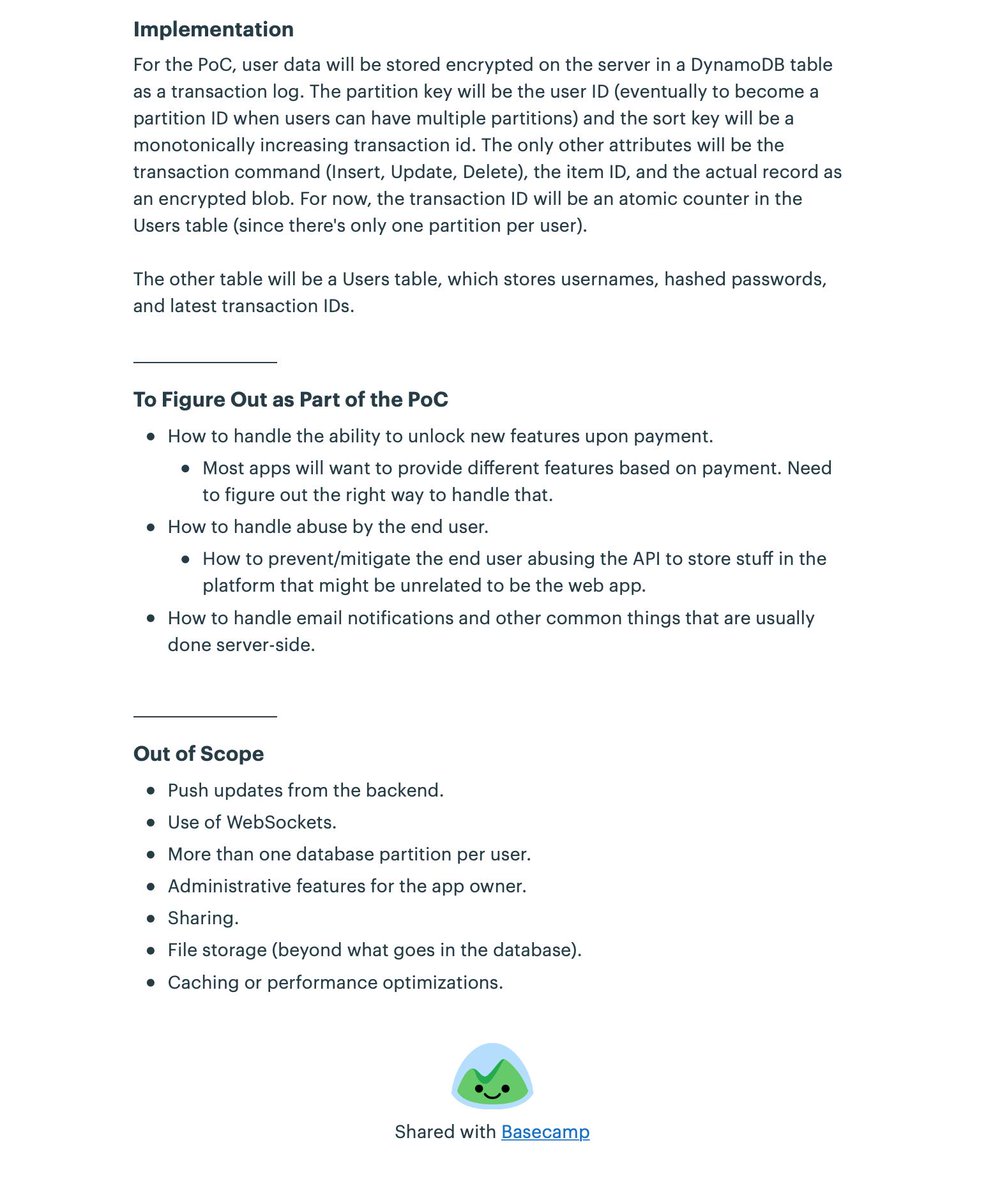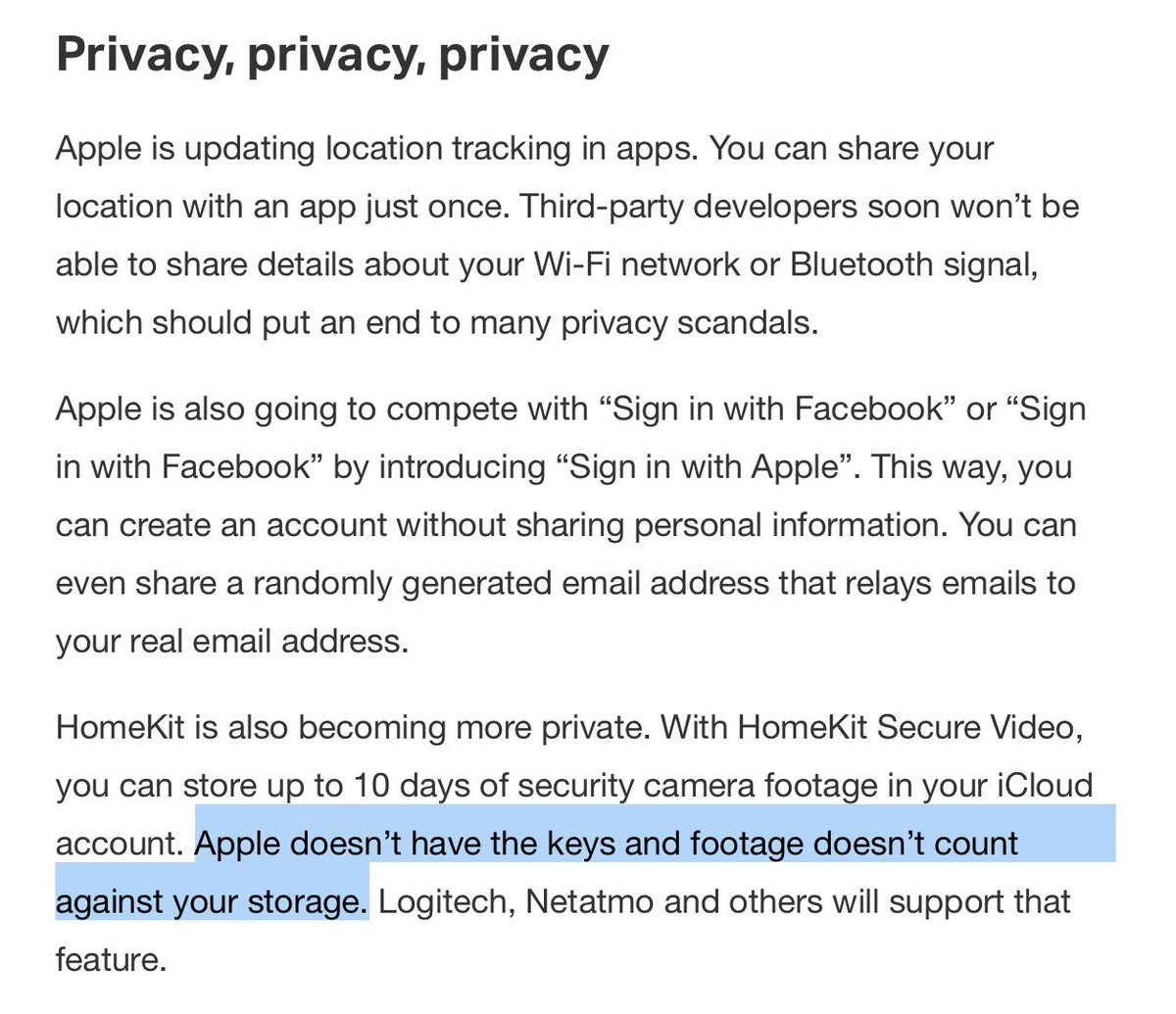An end-2-end encrypted serverless platform for web/mobile apps, offering user auth, db, & file store services. The end user gets privacy. The app developer gets spared from the liability & burden of handling user data.

The platform will offer 3 core services:
1️⃣ Account Management
2️⃣ Database
3️⃣ File Store
All these will be available through a JavaScript API for the browser. Initial iOS and Android support will be through @reactnative.
Local storage can also be used to cache materialized queries or compacted transaction logs. (Albeit capacity is small.)
First of all, user data is encrypted so that:
1⃣ the end user gets privacy from the app developer and platform.
2⃣ the app developer does not get burdened with the liabilities of handling user data.
So it's probably ok for share groups to use the same 🔑
And with that I have to make a correction. Earlier in this thread I said that user authentication would be done using just the private key. No.










